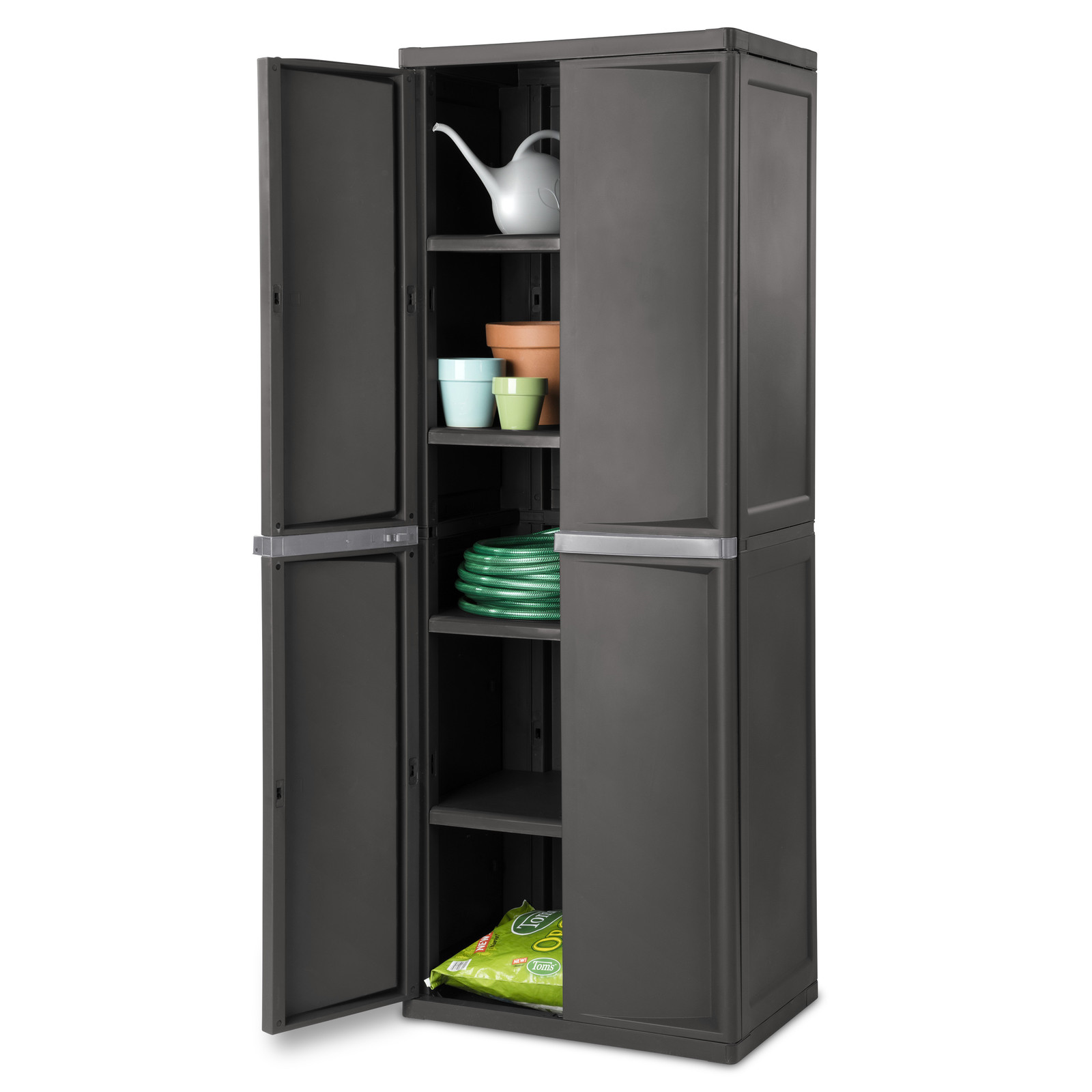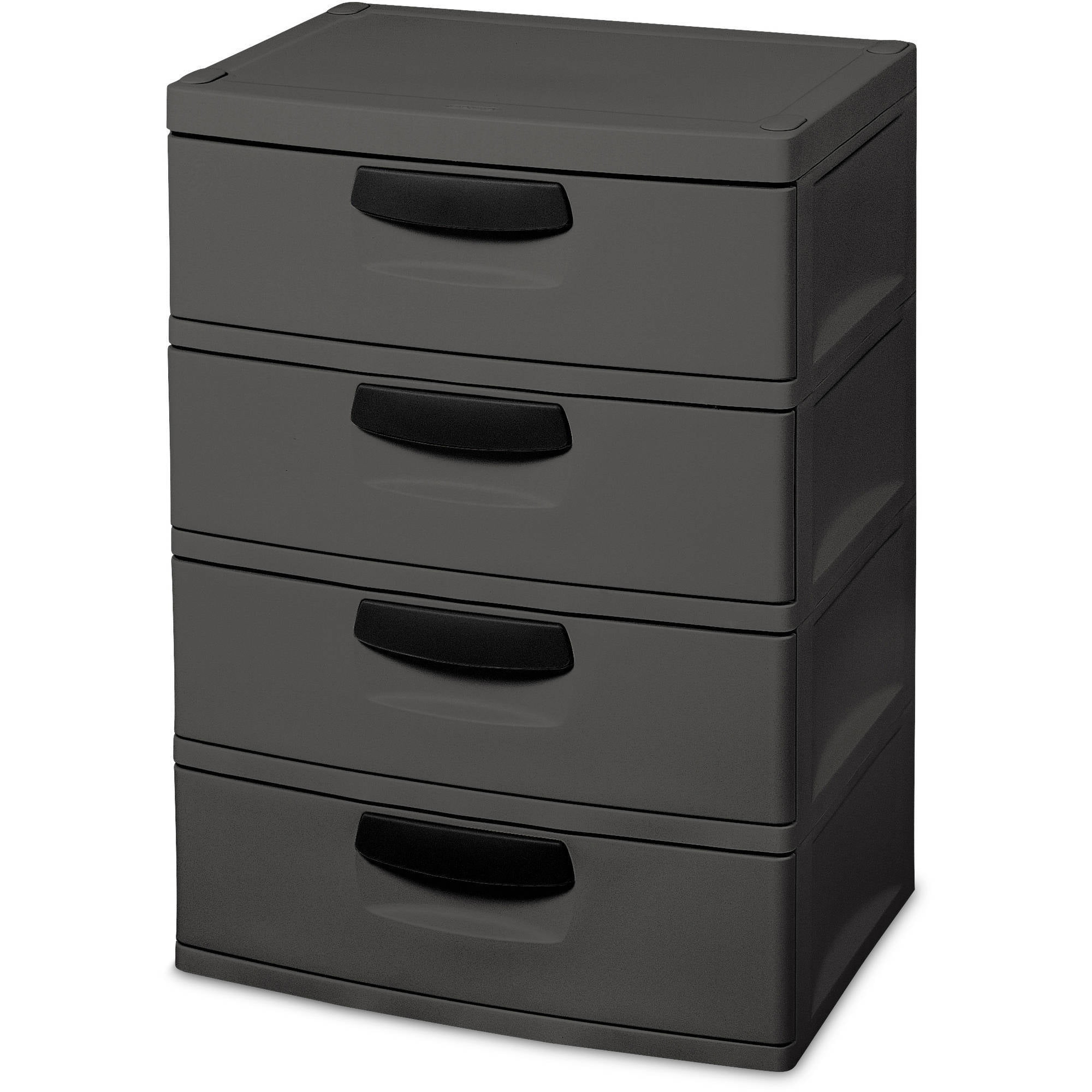Types and Styles of Plastic Cabinets with Doors: Plastic Cabinet With Doors

Get ready to dive into the exciting world of plastic cabinets! These versatile storage solutions offer a fantastic blend of durability, affordability, and style, making them perfect for a wide range of applications, from garages and workshops to bathrooms and kitchens. Let’s explore the amazing variety available!
Plastic Cabinet Construction Materials
The performance and longevity of your plastic cabinet hinges on the material it’s made from. Different plastics offer unique properties, making them suitable for different environments and purposes. ABS (Acrylonitrile Butadiene Styrene), Polypropylene, and Polycarbonate are among the most common choices. ABS is known for its impact resistance and rigidity, making it ideal for cabinets that need to withstand bumps and knocks. Polypropylene, on the other hand, offers excellent chemical resistance and is often chosen for outdoor or wet environments. Polycarbonate boasts exceptional strength and transparency, perfect for applications where visibility of contents is important. The choice of material often dictates the overall price point and durability of the cabinet.
Plastic Cabinet Door Styles
The style of the cabinet door significantly impacts both functionality and aesthetics. Let’s look at some popular options. Hinged doors, the classic choice, offer full access to the cabinet’s interior and are generally easy to install and maintain. Sliding doors, on the other hand, are space-saving and sleek, perfect for smaller areas. Bi-fold doors provide a compromise, offering good access while minimizing space requirements. Each style comes with its own set of pros and cons. For instance, hinged doors might require more swing space, while sliding doors can be more prone to derailing if not properly installed. The choice depends entirely on your needs and the available space.
Comparison of Plastic Cabinet Types
Below is a comparison table highlighting the price range, durability, and aesthetic appeal of various plastic cabinet types. Note that prices can vary significantly depending on size, features, and brand. Durability is assessed based on typical usage and resistance to damage, while aesthetic appeal is a subjective measure considering overall design and finish.
| Cabinet Type | Price Range (USD) | Durability | Aesthetic Appeal |
|---|---|---|---|
| Basic ABS Cabinet with Hinged Doors | $20 – $100 | Moderate – Good (resistant to minor impacts) | Functional, often simple designs |
| Polypropylene Cabinet with Sliding Doors | $50 – $200 | Good (resistant to moisture and chemicals) | Modern, sleek designs often available |
| High-impact Polycarbonate Cabinet with Bi-fold Doors | $150 – $500+ | Excellent (highly resistant to impacts and breakage) | Premium look, often customizable options available |
Applications and Uses of Plastic Cabinets with Doors

Plastic cabinets with doors are incredibly versatile and find their place in a wide array of settings, offering a durable, affordable, and often lightweight storage solution. Their adaptability stems from their resistance to moisture, chemicals, and impacts, making them suitable for both indoor and outdoor applications. The ease of cleaning further enhances their practicality in various environments.
Plastic cabinet with doors – The benefits extend beyond simple storage; they contribute to organization, safety, and even aesthetics depending on the design and placement. Let’s explore some specific examples of their use across diverse contexts.
Home Storage Applications
In homes, plastic cabinets with doors are invaluable for organizing clutter in garages, basements, kitchens, and bedrooms. Their waterproof nature makes them perfect for storing cleaning supplies in basements or damp areas, preventing damage to contents and the cabinet itself. In garages, they offer secure storage for tools and gardening equipment, keeping them organized and protected from the elements. Kitchens benefit from the use of plastic cabinets for storing pantry items, keeping them dry and pest-free. Bedrooms can utilize these cabinets for storing linens, clothes, or off-season items, maximizing space and minimizing visual clutter. The variety of colors and styles available allows for seamless integration with existing home décor.
Commercial and Industrial Applications
Plastic cabinets are widely used in various commercial and industrial settings. Offices utilize them for secure storage of sensitive documents and supplies, protecting them from unauthorized access and environmental damage. Schools employ them for storing classroom materials, sports equipment, and cleaning supplies, ensuring organization and safety. Workshops and factories benefit from their durability and chemical resistance, making them ideal for storing tools, parts, and chemicals. Their lightweight nature makes them easy to move and rearrange as needed, adapting to changing workspace layouts.
Case Study: Garage Tool Organization
Imagine a cluttered garage, overflowing with tools and equipment. A homeowner, frustrated with the disorganization, installs three large plastic cabinets with doors. Each cabinet is designated for a specific category of tools: hand tools, power tools, and gardening equipment. The clear labeling on each cabinet door and the internal shelving allow for easy access and identification of each tool. The result is a significantly improved workspace, where tools are protected from dust, moisture, and accidental damage, and finding the right tool is now a quick and efficient process. The homeowner experiences increased productivity and a more organized and safer working environment.
Industries Utilizing Plastic Cabinets with Doors
Numerous industries rely heavily on the functionality and practicality of plastic cabinets with doors. Here are a few examples:
- Healthcare: Storage of medical supplies, pharmaceuticals, and patient records, ensuring cleanliness and security.
- Manufacturing: Organization of small parts, tools, and chemicals, enhancing efficiency and safety in the workplace.
- Education: Storage of classroom materials, sports equipment, and supplies, promoting organization and protecting valuable resources.
- Retail: Storage of inventory, supplies, and point-of-sale materials, ensuring security and efficient stock management.
- Food Service: Storage of dry goods, cleaning supplies, and equipment, maintaining hygiene and organization in kitchens and storage areas.
Maintenance and Care of Plastic Cabinets with Doors

Keeping your plastic cabinets looking their best is easier than you might think! With a little regular care, you can extend their lifespan and maintain their attractive appearance for years to come. Proper cleaning and addressing minor issues promptly will prevent larger problems down the line, saving you time and money in the long run.
Cleaning Plastic Cabinets, Plastic cabinet with doors
Regular cleaning is crucial for maintaining the appearance and hygiene of your plastic cabinets. Dust and grime can accumulate, dulling the finish and potentially harboring bacteria. For routine cleaning, a simple solution of mild dish soap and warm water is usually sufficient. Apply the solution to a soft cloth or sponge, gently wiping down all surfaces. Rinse with clean water and dry thoroughly with a soft, absorbent cloth to prevent water spots. Avoid abrasive cleaners or scouring pads, as these can scratch the plastic. For stubborn stains, you might try a solution of baking soda and water, gently scrubbing with a soft brush. Always test any cleaning solution on an inconspicuous area first to ensure it doesn’t damage the finish.
Addressing Scratches and Cracks
Minor scratches are common with plastic cabinets, but they don’t necessarily signal the end of their useful life. For superficial scratches, a plastic polish or even a car wax can often buff them out, restoring the shine. For deeper scratches, a touch-up paint designed for plastics may be necessary. Choose a color that closely matches your cabinets. Apply the paint thinly and evenly, allowing it to dry completely before gently buffing the area. Cracks, however, require a more serious approach. Small cracks can sometimes be repaired with a plastic epoxy adhesive, following the manufacturer’s instructions carefully. For larger or more extensive cracks, replacing the affected cabinet door or panel might be the most practical solution. Prevention is key; avoid bumping or dragging heavy objects against the cabinets.
Preventing Discoloration and Fading
Exposure to direct sunlight can cause plastic cabinets to fade or discolor over time. To minimize this, avoid placing your cabinets in direct sunlight. If this isn’t possible, consider using UV-protective window film on your windows or installing curtains or blinds to filter the sunlight. Also, avoid using harsh chemicals or cleaning solutions that contain bleach, as these can damage the plastic and cause discoloration. Regular cleaning with mild soap and water will help maintain the vibrancy of the color and prevent premature fading. If discoloration does occur, you might consider using a plastic restoration product specifically designed to revive faded plastics, but always test it in an inconspicuous area first.
